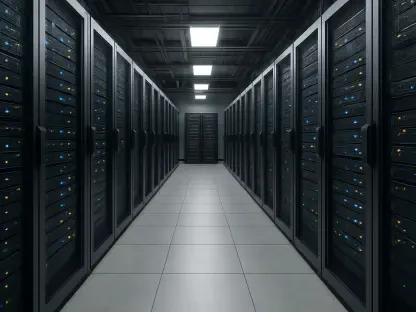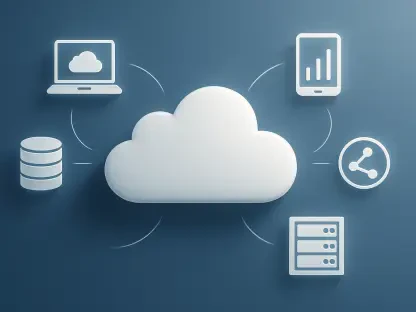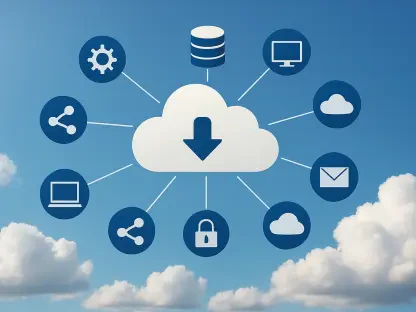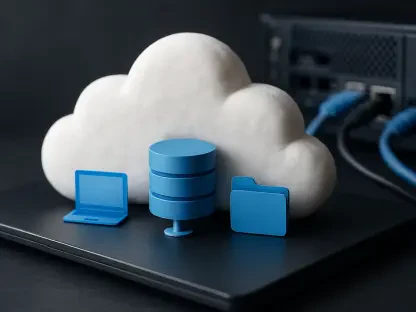Setting the Stage: Cloud Reliability as a Market Differentiator
In today’s enterprise technology landscape, where cloud adoption drives operational efficiency, reliability stands as a critical competitive edge for businesses seeking to optimize their operations. SAP, a titan in enterprise resource planning (ERP) software, faces mounting scrutiny after recurring outages of its cloud portal, SAP for Me, disrupted essential services for global businesses. With three incidents reported in the past 90 days, including one lasting nearly 11 hours, the market is buzzing with questions about SAP’s ability to uphold its cloud-first promises. This analysis delves into the implications of these disruptions, examining current trends in cloud reliability, assessing SAP’s position in the competitive ERP market, and forecasting potential impacts on customer trust and industry dynamics. The stakes are high, as downtime in cloud services can cost enterprises millions in lost productivity, making this a pivotal moment for SAP to prove its mettle.
Market Trends: Cloud Reliability Under the Microscope
Rising Expectations for Uptime in Enterprise Cloud Services
The enterprise cloud market has evolved rapidly, with businesses increasingly reliant on seamless access to digital tools for operations, support, and data management. Industry data highlights that 95% of companies now use cloud solutions for critical functions, placing unprecedented pressure on vendors to guarantee near-perfect uptime. SAP’s cloud portal, SAP for Me, designed as a centralized hub for customer support and product insights, has become a linchpin for many organizations. Yet, its recent outages underscore a broader market challenge: even established players struggle to meet the zero-downtime expectations of modern enterprises. This trend signals a shift toward stricter service-level agreements (SLAs) and heightened customer demands for transparency when disruptions occur.
Competitive Landscape: How SAP Stacks Up
Against this backdrop, SAP faces stiff competition from rivals like Oracle, Microsoft, and Salesforce, who are also vying for dominance in the cloud ERP space. Market analysis reveals that competitors have capitalized on reliability as a selling point, with some boasting uptime guarantees above 99.9%. SAP’s push toward cloud-centric offerings, exemplified by programs like RISE with SAP, aims to migrate legacy systems to scalable environments over the next few years. However, the instability of foundational tools like SAP for Me raises red flags for potential adopters. If unresolved, these issues could cede ground to competitors who prioritize infrastructure robustness, reshaping market share in an industry projected to grow significantly by 2027.
Impact of Downtime on Customer Sentiment
Beyond competitive dynamics, the outages have tangible effects on customer sentiment, a critical driver of market retention. Businesses relying on SAP for Me for support ticketing and real-time data access reported significant operational hiccups during the disruptions, with some unable to progress on implementations or upgrades. Market surveys indicate that downtime not only frustrates users but also erodes long-term trust, with nearly 60% of affected customers reconsidering vendor partnerships after repeated incidents. This sentiment poses a risk to SAP’s growth trajectory, as negative feedback can influence prospective buyers in a market where word-of-mouth and case studies heavily impact purchasing decisions.
Data Deep Dive: Analyzing the Scale of Disruptions
Quantifying the Operational Fallout
A closer look at the data surrounding SAP’s cloud portal outages reveals the scale of their impact on the market. The most severe incident, lasting 11 hours, affected thousands of users globally, stalling critical business processes such as software patching and project rollouts. Industry estimates suggest that each hour of downtime in enterprise cloud services can result in losses averaging $100,000 for mid-sized firms, with larger corporations facing even steeper costs. For SAP’s customer base, spanning diverse sectors like manufacturing and finance, these figures translate into a measurable dent in productivity, amplifying concerns about the vendor’s reliability in high-stakes environments.
Strategic Implications for Cloud Adoption Rates
From a strategic perspective, the disruptions cast a shadow over SAP’s ambitious cloud adoption goals. The RISE with SAP initiative, targeting widespread migration to platforms like S/4HANA, hinges on the promise of seamless, dependable cloud infrastructure. Market projections indicate that cloud ERP adoption will accelerate through 2027, with hybrid models gaining particular traction. However, recurring issues with basic tools like SAP for Me could slow SAP’s penetration in this space, as risk-averse enterprises might delay transitions or explore alternative providers. This hesitation could alter the pace of market transformation, affecting SAP’s revenue forecasts tied to cloud subscriptions.
Regional Variations in Market Response
Geographically, the impact of these outages varies, reflecting diverse market maturity and dependency on cloud solutions. North American and European markets, where SAP holds a strong foothold, expressed significant frustration due to their heavy reliance on real-time support systems. In contrast, emerging markets in Asia-Pacific, while also affected, showed more tolerance, often due to lower integration levels of cloud tools in daily operations. This disparity suggests that SAP must tailor its recovery strategies to address regional expectations, potentially prioritizing infrastructure upgrades in key mature markets to safeguard its dominant position while fostering growth in developing regions.
Future Projections: Navigating the Reliability Challenge
Infrastructure Investment as a Market Imperative
Looking ahead, market analysts anticipate that SAP will need to channel substantial resources into infrastructure resilience to reclaim market confidence. Predictions suggest that vendors investing in advanced failover mechanisms and proactive monitoring systems will lead the cloud ERP sector by the end of this decade. For SAP, this could mean adopting decentralized architectures for critical services like SAP for Me, minimizing the risk of widespread outages. Failure to act swiftly might result in a projected loss of up to 10% of market share to competitors who double down on reliability, a significant hit for a company of SAP’s stature in the enterprise software arena.
Evolving Customer Expectations and Vendor Accountability
Another forecast centers on the evolution of customer expectations, which are likely to demand greater vendor accountability in the coming years. Market trends point to a rise in customized SLAs, with penalties for downtime becoming standard in contracts. SAP may face pressure to offer transparent roadmaps detailing preventive measures and compensation frameworks for affected users. Such steps could redefine customer-vendor relationships in the cloud market, pushing SAP to balance innovation with stability to maintain its reputation as a trusted partner amid growing scrutiny over performance metrics.
Potential Regulatory and Industry Shifts
Lastly, the broader industry might see regulatory shifts as cloud reliability becomes a focal point for policymakers. Projections indicate that data availability and uptime could fall under stricter oversight, especially in sectors like finance and healthcare, where SAP has a sizable presence. Compliance with emerging standards could add operational costs but also present an opportunity for SAP to differentiate itself by leading in adherence to best practices. Market watchers speculate that aligning with these potential regulations early could position SAP as a frontrunner, provided it addresses current vulnerabilities with decisive action.
Reflecting on the Path Forward: Strategic Lessons from SAP’s Challenges
Looking back, the analysis of SAP’s cloud portal outages revealed a critical vulnerability in an otherwise dominant player in the ERP market. The disruptions not only highlighted gaps in infrastructure but also exposed the fragility of customer trust when reliability faltered. For SAP, the takeaway was clear: immediate investment in robust systems and transparent communication was non-negotiable to prevent further erosion of market confidence. Competitors, meanwhile, gained a window to capitalize on these missteps, underscoring the urgency for SAP to act. Moving forward, the company needed to explore innovative solutions like hybrid redundancy models and partner with customers to redefine SLAs that prioritized uptime. These strategic pivots, if executed effectively, promised to transform a challenging chapter into a foundation for renewed leadership in the ever-evolving cloud landscape.









